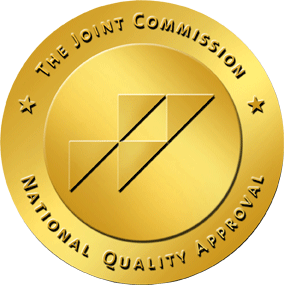Borderline Personality Disorder treatment is important for anyone struggling with intense emotions and difficult relationships caused by this condition.
In the next sections, you’ll find out how to recognize symptoms, when to get help, how borderline personality disorder (BPD) is diagnosed, and what kinds of treatments are available to support you on your journey.

Overview of Borderline Personality Disorder
BPD is a mental health condition that makes it hard for you to manage your emotions. According to the National Institute of Mental Health (NIMH), BPD can cause strong mood swings, make you act on impulse, and affect the way you see yourself and others. This can lead to a lot of stress in your personal life, especially in relationships with family, friends, or partners.
You might feel very happy one moment and suddenly feel empty or angry the next. You might also fear being abandoned or left out, even when no one is planning to leave you. These emotional ups and downs can make everyday life feel exhausting.
BPD isn’t very common – about 1 out of every 70 adults in the U.S. has it.
What Causes Borderline Personality Disorder?
Doctors and researchers still don’t know the exact cause of BPD, but they believe it’s likely a combination of different factors. Some people may be more likely to develop BPD because of their family background, how their brain works, or difficult life experiences.
Here’s a simple look at what might raise the risk:
1. Family History
If someone in your family, such as a parent, brother, or sister, has BPD, you might have a higher chance of developing it too. Mental health conditions can sometimes run in families.
2. Brain Differences
Studies have found that people with BPD may have changes in parts of the brain that help control emotions and behavior. This might explain why emotions can feel so intense and hard to manage. But it’s not clear whether these brain changes cause BPD or if BPD causes the changes.
3. Tough Life Experiences
Many people with BPD went through hard or painful events when they were younger. This could include things like abuse, being abandoned, or growing up in a home where they didn’t feel safe or supported. These experiences can affect how you see yourself and how you relate to others later in life.
Identifying the Common Symptoms of BPD
BPD can affect your thoughts, emotions, and relationships in ways that feel overwhelming or confusing. Here are some common symptoms to look out for:
1. Strong Mood Swings
You might feel really happy one moment and deeply sad or angry the next, for no clear reason. These mood changes can happen fast and often.
2. Fear of Being Abandoned
You may worry a lot about people leaving you, even if they’re not. This fear can lead you to do things like cling to others or push them away without meaning to.
3. Unstable Relationships
Your relationships may be full of ups and downs. One day, you might think someone is perfect, and the next day, you might feel like they don’t care about you at all.
4. Confused or Shifting Self-image
You might not be sure who you are or what you want. Your goals, values, or sense of self can change often.
5. Impulsive Behavior
You may act quickly without thinking, especially when you’re upset. This can include things like reckless driving, spending too much money, or risky behavior.
6. Feeling Empty Inside
You might often feel like something is missing or feel numb, even when things seem okay on the outside.
7. Anger That’s Hard to Control
You may get angry fast and find it hard to calm down. Sometimes the anger feels stronger than the situation calls for.
8. Stress-Related Paranoia or Feeling Disconnected From Reality
In very stressful moments, you might feel paranoid or like you’re outside of your body, like you’re watching yourself from far away.
Everyone has ups and downs, but with BPD, these symptoms are more intense and can make daily life hard. If you spot several of these signs in yourself, it may be time to talk to a mental health professional.
How BPD Is Diagnosed
Studies show that BPD affects about 0.7% to 2.7% of people in the general population. But it’s seen more often in health care settings:
- About 6% of people in regular doctors’ offices may have BPD.
- Around 11% to 12% of people in mental health clinics may have it.
- As many as 22% of patients in psychiatric hospitals may be diagnosed with BPD.
This is likely because people with BPD often deal with very serious symptoms, like self-harm or suicidal thoughts, which can lead them to go to the emergency room or get admitted to a hospital. Doctors and mental health professionals in these places are usually more experienced with BPD and can identify the signs more easily than general doctors.
The current version of the Diagnostic and Statistical Manual of Mental Disorders (DSM-5) helps doctors understand and diagnose mental health conditions like BPD. Over time, the DSM has made updates to give clearer and more accurate ways to identify personality disorders.
To diagnose BPD using the newer model, two main things must be true:
- You must have serious problems in at least two areas of your personality. These can include how you see yourself (identity), how you make decisions (self-direction), how you understand others (empathy), or how you connect with people (intimacy).
- You must show at least four traits, such as:
- Strong mood swings (emotional instability)
- Feeling anxious
- Fear of being left alone
- Ongoing sadness
- Acting without thinking (impulsiveness)
- Doing risky things
- Getting angry or hostile
- Strong mood swings (emotional instability)
At least one of the traits must be impulsiveness, risky behavior, or hostility for the diagnosis to fit.
Treatment Options for Bipolar Disorder
There is no medication made just for BPD. However, there are special types of therapy designed to help you manage the symptoms and improve your daily life.
A study looked at how well different therapies work for people with BPD based on how well they understand their own and others’ feelings. This skill is called reflective functioning.1
The researchers studied four types of treatment:
- Transference-Focused Psychotherapy (TFP)
- Dialectical Behavior Therapy (DBT)
- Supportive Psychodynamic Therapy (SPT)
- Community-based care
They found that people with low reflective functioning did better with TFP or SPT. These therapies help you understand emotions and relationships more deeply. People with high reflective functioning responded better to DBT and community-based care. These treatments teach you specific skills to manage your emotions and improve your relationships.
This shows that choosing the right therapy based on how well you understand feelings can help you get better results.
Besides these, behavioral therapies like Cognitive Behavioral Therapy (CBT) also play a helpful role by teaching you ways to change negative thoughts and behaviors.
Conclusion
Building a strong, trusting relationship with your therapist is very important, but it can be hard because BPD often makes relationships feel unstable or confusing. Sometimes, the ups and downs in the therapist-patient relationship, including moments of trouble and repair, actually help people with BPD heal better.
So, if you’re thinking about treatment, know that therapy can be very helpful, but it takes time, patience, and the right support to find what works best for you.
At OceanRock Health, we offer personalized care to help manage your BPD symptoms and improve your well-being. South Coast Counseling also provides support and guidance to find the treatment that works best for you.

Source:
- Keefe, J. R., Levy, K. N., Sowislo, J. F., Diamond, D., Doering, S., Hörz-Sagstetter, S., Buchheim, A., Fischer-Kern, M., & Clarkin, J. F. (2022). Reflective functioning and its potential to moderate the efficacy of manualized psychodynamic therapies versus other treatments for borderline personality disorder. Journal of Consulting and Clinical Psychology. https://doi.org/10.1037/ccp0000760









